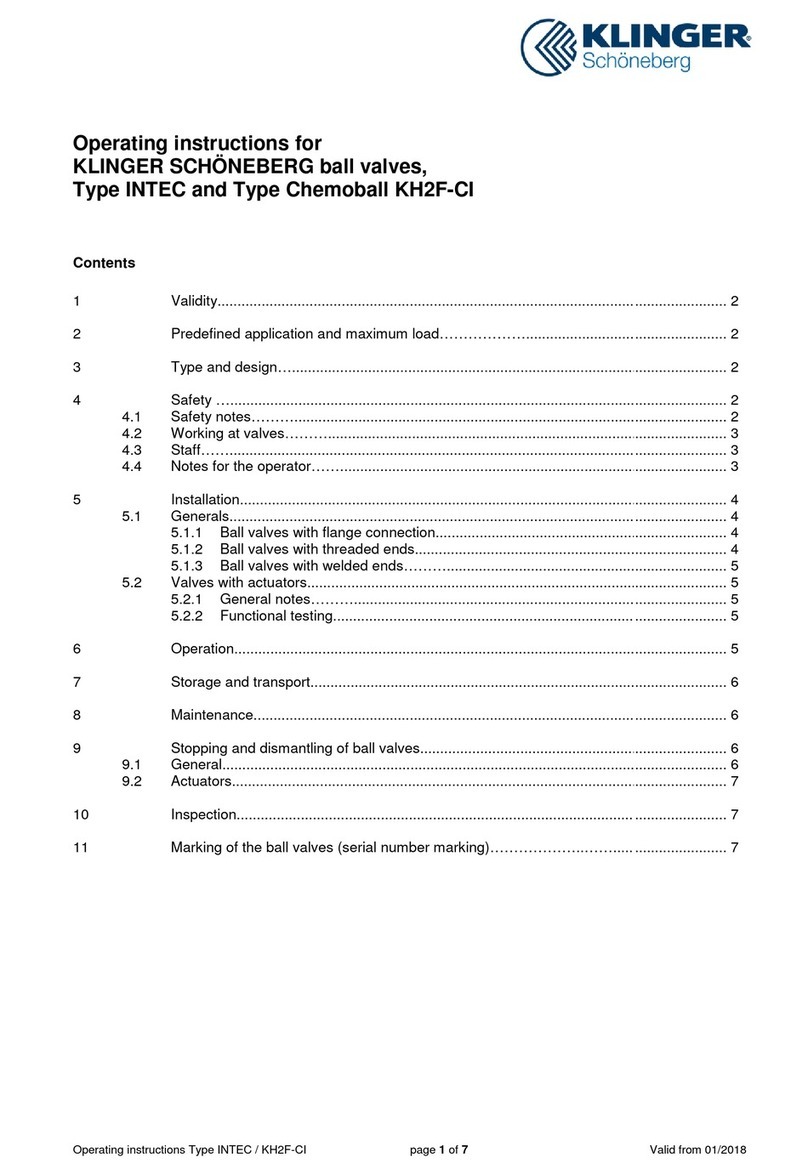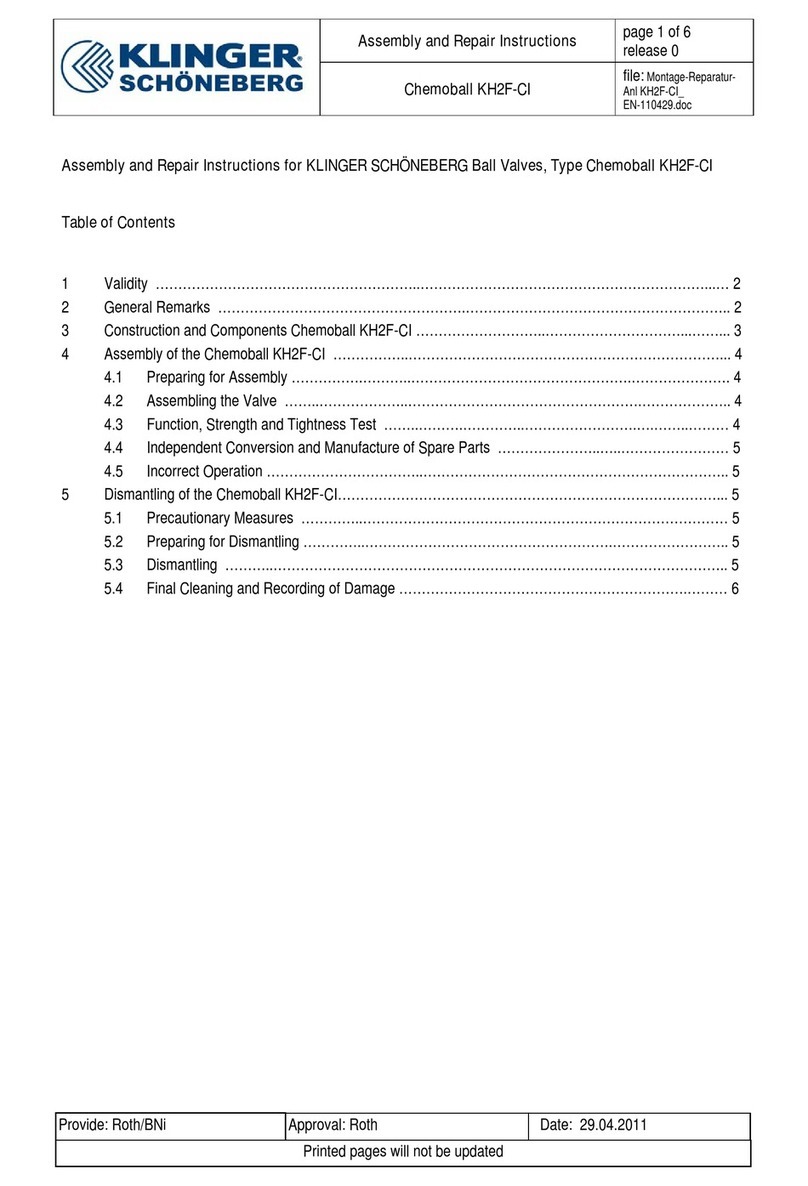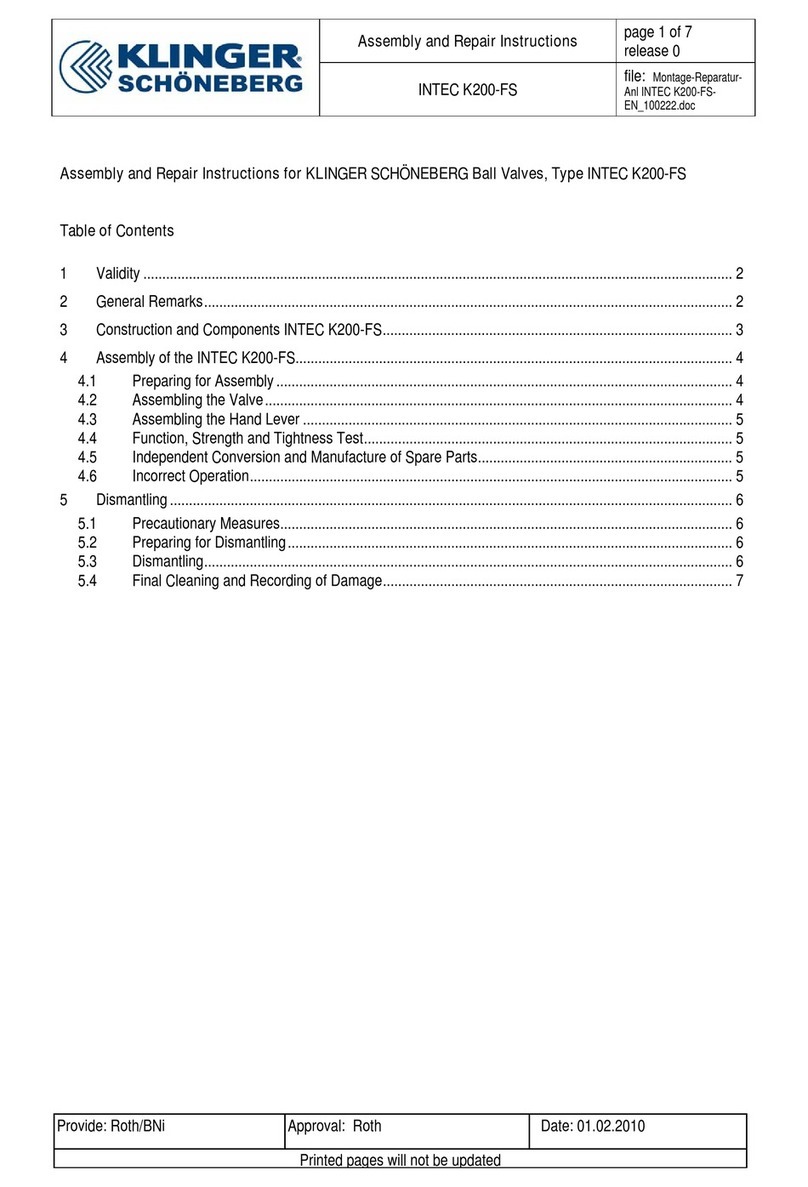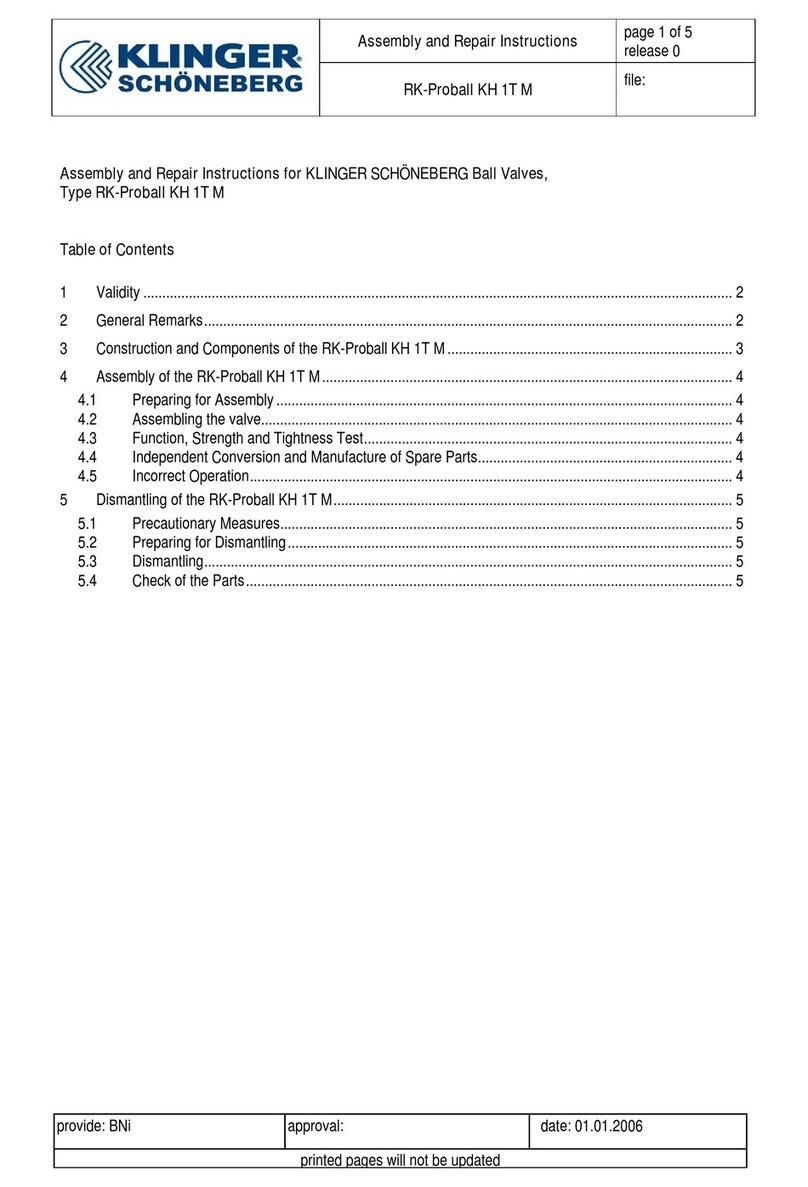
Assembly and Repair Instructions page 4 of 6
release 0
INTEC K411- T&L-ST file:
Montage-Reparatur-
Anl INTE K411 T&L ST -
EN_22012016
Provide: Hauck Approval: Roth
ate: 22.01.2016
4Assembly of the INTEC K411-T&L-STD
4.1 Preparing for Assembly
All parts must be prepared to assemble the ball valve, i.e. the parts are carefully cleaned and laid on a soft base
(rubber mat or similar).
It must be considered that the plastic parts are almost always soft and very sensitive and that in particular the
sealing surfaces may not be damaged.
4.2 Assembling the Valve
The body (1) of the valve must be tensioned securely and safely in a suitable device; free access to the cavity
and stem must be guaranteed.
Lightly grease the body (1) and the cap (2) and blind cap (22) in the area of the seat ring (4) with high tempera-
ture grease (e.g. Q1) licensed by the F A. Insert spiral spring (16) into cap (2) and blind cap (22). Attention:
quantity of spiral springs according to the specification or resultant torque. Insert follower ring (21), seat seal (19)
and seat ring (4) in cap (2) and blind cap (22). It should be able to insert it with slight manual pressure. If it fits too
tightly or too loosely the dimensions must be checked.
Slightly grease the stem (6) in the area of the below bearing (11) and below seal parts (7) (8) with high tempera-
ture grease licensed by the F A. Similarly slightly grease the body (1) in the area of the bearing and the stem
sealing. Only a light grease film should arise which does not spill out during assembly of the sealing elements.
The grease may be applied with the assistance of a brush for example.
Handle graphite gaskets with more caution because the material breaks easily through strong distortion
In the case of valves stated as being oil- and grease-free the assembly should be made without grease
and without other auxiliary substances.
Thread on bearing (11) and sealing parts (7) (8) to stem (6) and push on stem from the inside through the body
(1). Bearing parts may not be damaged.
Thread on stem sealing parts (9) (10) (12) from the top to the stem (6). Screw on the self-locking nut (14) onto the
stem (8). Tighten nut with wrench.
Tighten the nut up to seated on the sealing package, rotate a ½ turn more, so the sealing package can set. Then
the nut must be rotated a ¼ turn back and after this the torque of the stem has to be tested.
The following table will provide a guide:
torque
28 Nm
50 Nm
70 Nm
After testing secure the nut (14) by allen screw.
Fit ball (3) with groove to stem and place in the body.
Coat the trunnion (17) on bearing (13) with high temperature fat (OKS) in order to avoid cold welding.
Slide trunnion seal (20) and bearing (13) on the trunnion (17) and push it into body (1). Tighten Trunnion with hex.
screw (15) in body (1).
on’t shear or damage sealing- and bearing parts.






























